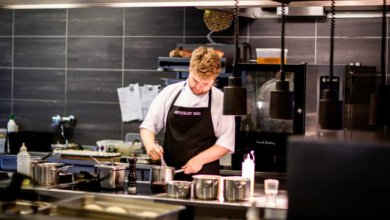Introduction
There is something undeniably charming about enjoying a meal outdoors. The gentle breeze, natural sunlight, and the lively hum of the surroundings can transform an ordinary lunch or dinner into a memorable experience. This is the essence of al fresco dining, a tradition that blends the pleasure of good food with the beauty of the open air. Across cities and coastal towns, more restaurants are embracing this trend, offering guests a chance to savor both cuisine and atmosphere.
The Origin Of Al Fresco Dining
The term “al fresco” originates from Italian, meaning “in the fresh air.” While the concept of eating outside is as old as human civilization, the modern interpretation is often associated with leisurely European lifestyles, particularly in Mediterranean countries where weather conditions encourage outdoor meals. Over time, the practice has spread worldwide, adapting to different climates and cultures.
Why Al Fresco Dining Appeals To Many
Dining outdoors is not just about location—it is about the sensory experience. Natural light enhances the colors of food, the fresh air can stimulate the appetite, and the surrounding environment often adds a unique charm. For many, al fresco dining also offers a feeling of freedom and relaxation that is harder to achieve indoors.
Popular Settings For Outdoor Dining
Street-Side Cafes
In urban areas, small street-side cafes with outdoor seating provide a front-row view of city life. Guests can enjoy their coffee or lunch while watching people and traffic pass by.
Rooftop Terraces
Restaurants with rooftop terraces give diners panoramic views of city skylines or natural landscapes, making the meal more memorable.
Garden Restaurants
Garden settings offer a lush, green environment where guests can enjoy nature along with their meal. This setting is especially appealing for brunches and afternoon teas.
Beachfront Spots
For coastal destinations, al fresco dining by the sea provides not only great food but also the soothing sounds of waves and stunning sunsets.
Seasonal Considerations
One of the factors that influence the popularity of al fresco dining is the weather. In regions with warm climates, outdoor dining can be enjoyed year-round. In places with colder winters, restaurants may offer seasonal outdoor seating during spring and summer, sometimes using heaters and blankets to extend the experience into cooler months.
See also: Kids Insulated Water Bottle: A Smart Hydration Choice for Active Lifestyles
The Role Of Design And Comfort
The comfort of guests is essential for a successful outdoor dining space. This includes comfortable seating, adequate shade or shelter, and thoughtful layout to avoid crowding. Lighting is also important—natural light works for daytime, while soft ambient lighting enhances the mood at night. Well-placed plants, decorative elements, and even outdoor music can add to the overall experience.
The Social Side Of Al Fresco Dining
Outdoor dining is often linked with social gatherings. Whether it is a family meal, a romantic date, or a group celebration, the open environment encourages conversation and connection. The relaxed setting allows people to linger longer at the table, making meals feel more like events than simple eating occasions.
The Impact On Restaurants
For restaurants, offering al fresco dining can attract more customers and increase revenue, particularly in areas with scenic surroundings or pleasant weather. Outdoor seating often draws in passersby who are enticed by the lively, inviting atmosphere. It can also serve as a differentiator for businesses in competitive dining districts.
Combining Food And Atmosphere
Certain cuisines pair exceptionally well with outdoor dining. Light, fresh dishes such as salads, seafood, and grilled vegetables complement warm weather settings. In cooler evenings, hearty soups, roasts, and warm desserts can create a cozy outdoor meal. Drinks also play a role—iced teas, chilled wines, and fresh cocktails often enhance the al fresco dining experience.
Challenges Of Outdoor Dining
While the idea of eating outdoors is appealing, it comes with challenges. Weather changes, insects, and noise levels can affect the experience. Restaurants need to prepare for these factors by providing shade, wind barriers, and insect control measures. Staff training is also important, as serving outdoors requires attention to details like table stability and maintaining food temperature.
The Future Of Al Fresco Dining
With an increasing focus on lifestyle experiences, outdoor dining is likely to remain popular. As urban design evolves, more spaces are being created to accommodate open-air eating, from pedestrian-only streets to rooftop gardens. Additionally, technology such as retractable awnings, portable heaters, and misting fans allows for greater comfort in various climates.
Tips For Enjoying Al Fresco Dining
- Check The Weather – Ensure conditions will be comfortable before heading out.
- Dress Appropriately – Light clothing for warm days, layers for cooler evenings.
- Choose The Right Location – Consider whether you prefer a lively street view or a quiet garden.
- Time Your Meal – Sunrise breakfasts and sunset dinners can offer the best lighting and ambiance.
Conclusion
Al fresco dining is more than just eating outside—it is a celebration of food, nature, and human connection. From bustling city sidewalks to peaceful coastal patios, it offers a unique way to enjoy a meal. As more restaurants embrace outdoor seating, diners have endless opportunities to combine great cuisine with the pleasures of the open air. Whether for a casual lunch or a special occasion, this style of dining continues to capture the hearts of people around the world.





